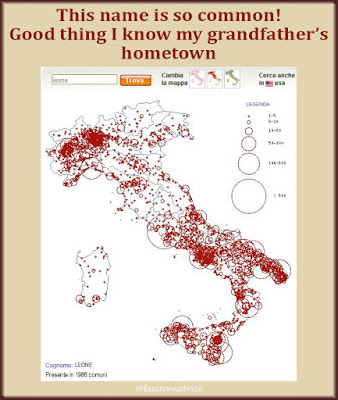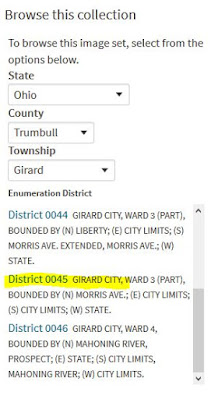An interesting point came up in a Facebook genealogy group yesterday. The clerk who hand-wrote your ancestor's birth, marriage or death record may not have been that skilled.
- He may have misspelled a word—leaving you to try to translate a word that isn't a word.
- He may have made an accidental substitution—adding the wrong sibling's birth record to a set of marriage documents.
- He may have recorded the midwife's last name as the baby's last name.
What do you do with this messed up documentation?
In an earlier article about disagreeing documentation, I spelled out my two cardinal rules:
- The earliest recorded document is probably correct.
- Some documents are more official than others.
Sometimes you need to:
- Make an educated guess
- Use the scientific method
- Gather as much information as you can
Then see if logic tells you what the truth must be.
Here's an example. Consider these data points:
- Michele Petruccelli was born in Baselice, Italy on March 8, 1800 to Costanzo Petruccelli and Brigida Ciusolo.
- Michele Petruccelli was born in Baselice, Italy on September 11, 1802 to the same parents.
- Two babies born to the same parents, with the same name. Logic tells us the first Michele must have died before the second Michele was born.
- No death records are available for 1800–1802, so we cannot verify the first baby's death.
- In 1828 Michele (born in 1802) married Mariarosa Mattia. She died in 1828.
- In 1830 Michele (born in 1800) married Veneranda Pozella.
 |
| The marriage records overlook the fact that Michele is a widower. |
If logic says there were not two sons growing up in the same family with the same first name, then both the 1828 marriage and the 1830 marriage must belong to the younger Michele Petruccelli—the survivor who was born in 1802. This hypothesis works because the two marriages do not overlap.
This means there was a clerical error. In 1830 when widowed Michele Petruccelli married for the second time, a clerk accidentally used the birth record of the deceased Michele Petruccelli.
For further proof, I took another look at the 1829/1830 marriage records. It says that Michele was 23 when he received permission to marry. That fits 1802 Michele better than 1800 Michele.
Of course it's still wrong. He was 27!
The document does not say that Michele is a widower, but it does say his bride is a widow. In the full set of marriage documents for Michele and Veneranda, there is no mention of Michele's first wife Mariarosa Mattia.
This is also a mistake. It's really quite an oversight!
Mariarosa Mattia's death record clearly states she was the wife of Michele Petruccelli, son of Costanzo.
 |
| The death record for Michele's first wife leaves no doubt who her husband is. |
So what would you do? Michele and Mariarosa were married only eight months when she died, so they had no children. Michele and Veneranda also had no children though they both lived past the year 1860. There is no more evidence.
I'm convinced the clerk made mistakes in 1829/1830. The Michele born in 1800 died before 1802. The younger Michele grew up and married twice.
So, having exhausted all resources and finding that logic is on my side, I'm going to update my family tree.
I'm going to say that the first Michele Petruccelli died before the second was born on September 11, 1802. And I'm going to give the bride, Veneranda Pozella, to the second Michele Petruccelli.
By the way, Michele Petruccelli is the brother-in-law of the sister-in-law of my fourth great uncle whose name is also Petruccelli. It's a small town.









